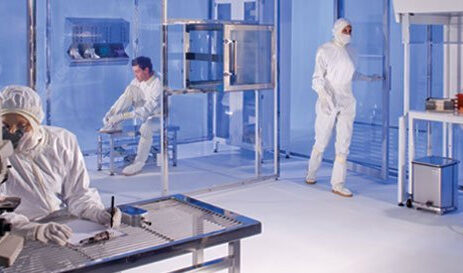Cleanroom safety with sampling gas detectors
Cleanrooms are enclosed facilities specially designed to control levels of airborne contamination. Depending on the particle concentration, clean rooms are categorized into nine ISO classes. Class 1 being the purest and containing only 12 particles per cubic meter. By contrast, the particulate concentration of ambient air is around 35 million particles per cubic meter.
Some key industries that inevitably use cleanrooms include pharmaceuticals, medical laboratories, semiconductor manufacturing, biomedical research, vaccine development, microelectronics, and more.
Adhering to strict cleanliness protocols in cleanrooms naturally calls for measures that pose significant health and safety risks to working personnel. One typical process to decontaminate or disinfect cleanroom surfaces and their instruments uses hydrogen peroxide. It acts as a sterilizing agent and is a hazardous chemical even in small concentrations. Its workplace exposure limit averaged over an 8-hour duration is just one part per million (ppm). Inhalation or direct contact with hydrogen peroxide vapours can cause severe respiratory problems, skin burns, and eye damage. Avoiding such life-threatening accidents requires smart, digital gas detection systems that can continuously monitor the cleanroom environment for dangerous levels of such harmful gases and can automatically trigger alarms in case of over-exposures.
Cleanrooms routinely work with acids like nitric acid, hydrofluoric acid, sulfuric acid, highly flammable solvents like acetone and toxic materials such as silane. For example, acids are used for cleaning and etching wafers in the semiconductor industry, and solvents are used in many cleaning and degreasing processes. Accidental spills and leaks of these flammable chemicals can generate hazardous fires and fumes in confined cleanrooms that can cause immediate suffocation and be potentially life-threatening.
Certain life science cleanrooms such have higher grade, sterile environments. Due to the biological work carried out it is important that the cleanroom does not have any airborne contaminants such as volatile organic compounds (VOC), which can negatively impact or destroy human cells. Therefore, there is a requirement for higher grade cleanrooms to have VOC detectors installed in the from of a Photoionisation Detector (PID) to monitor the cleanroom and alert staff of any VOC’s in the environment.
